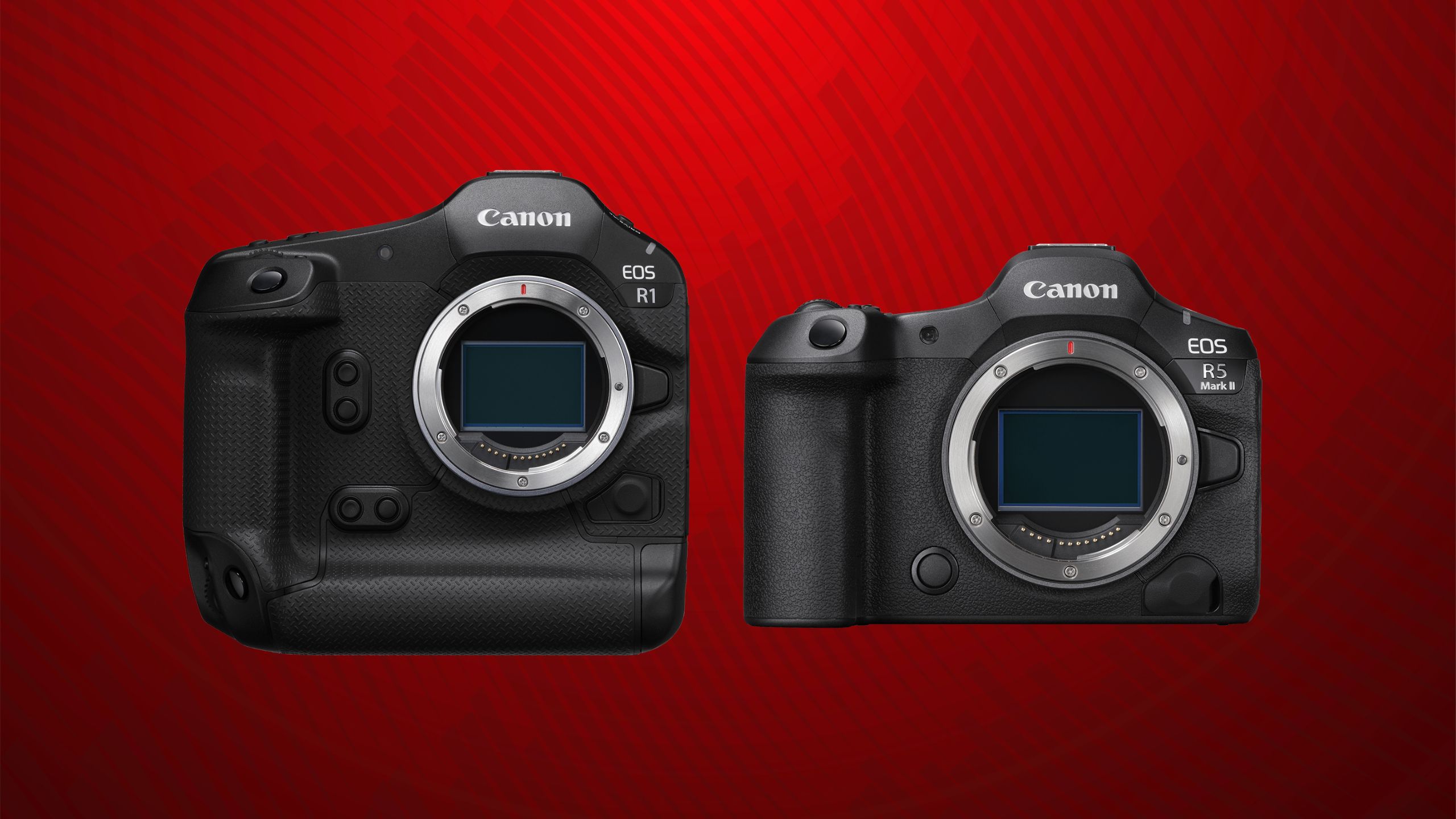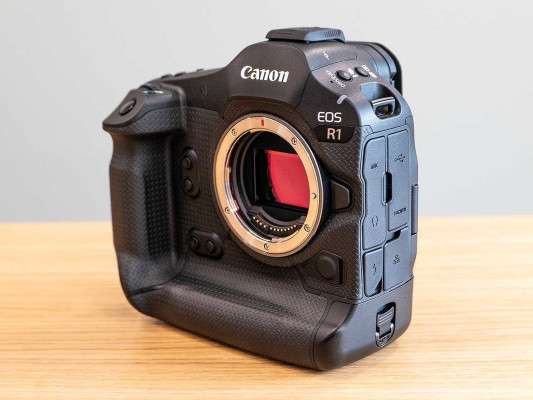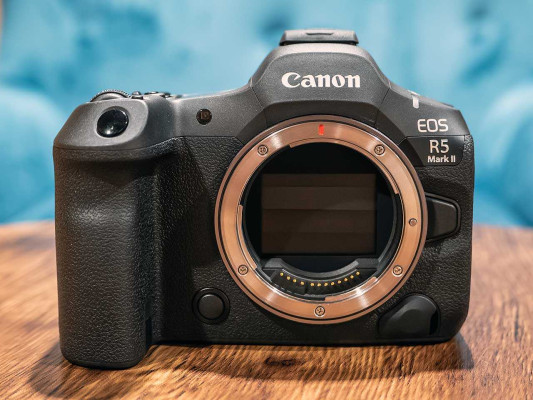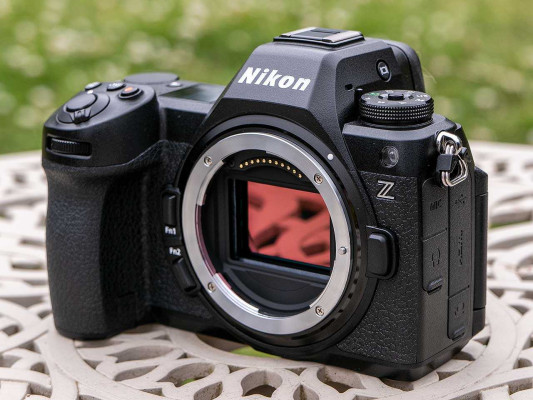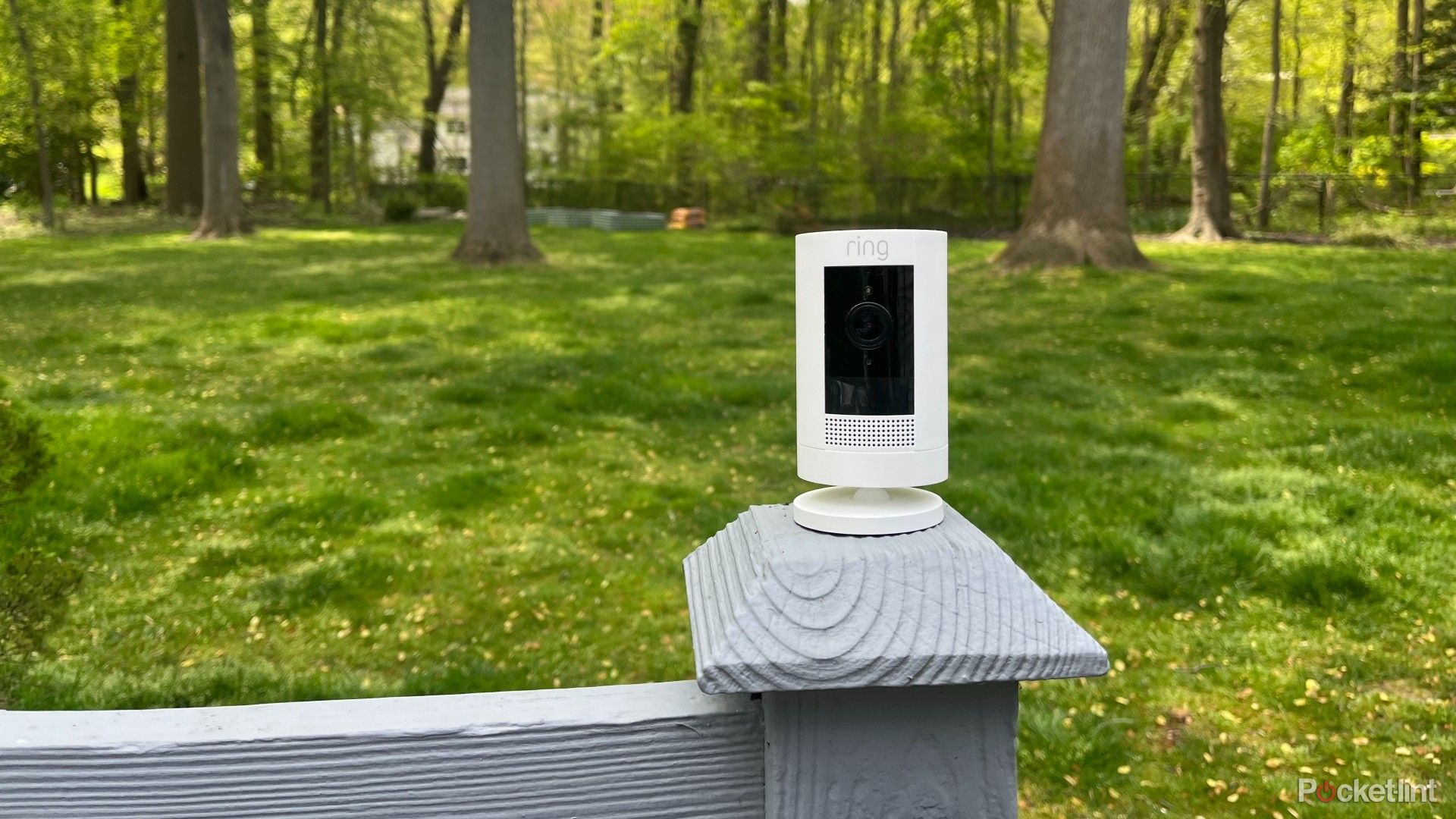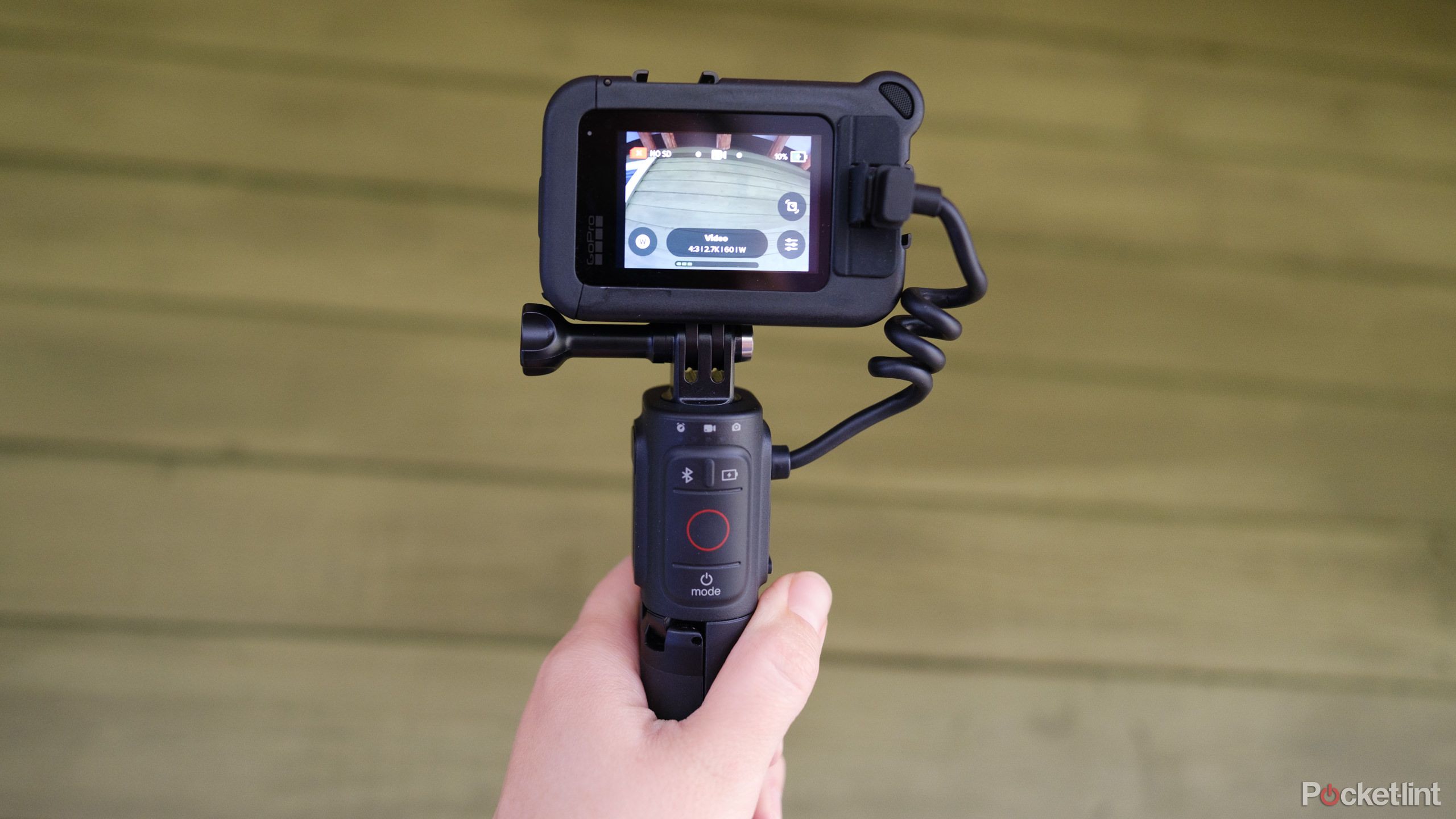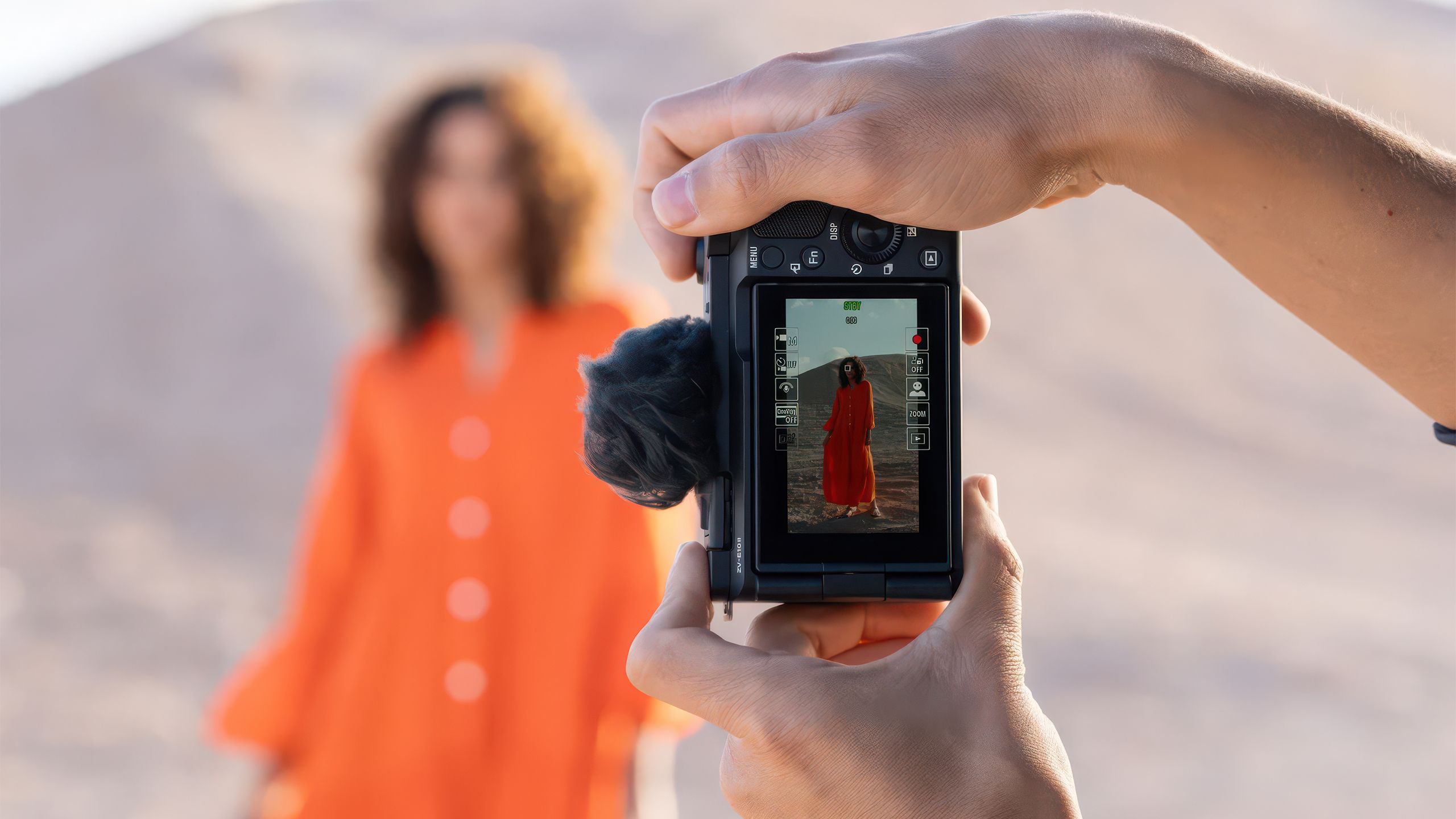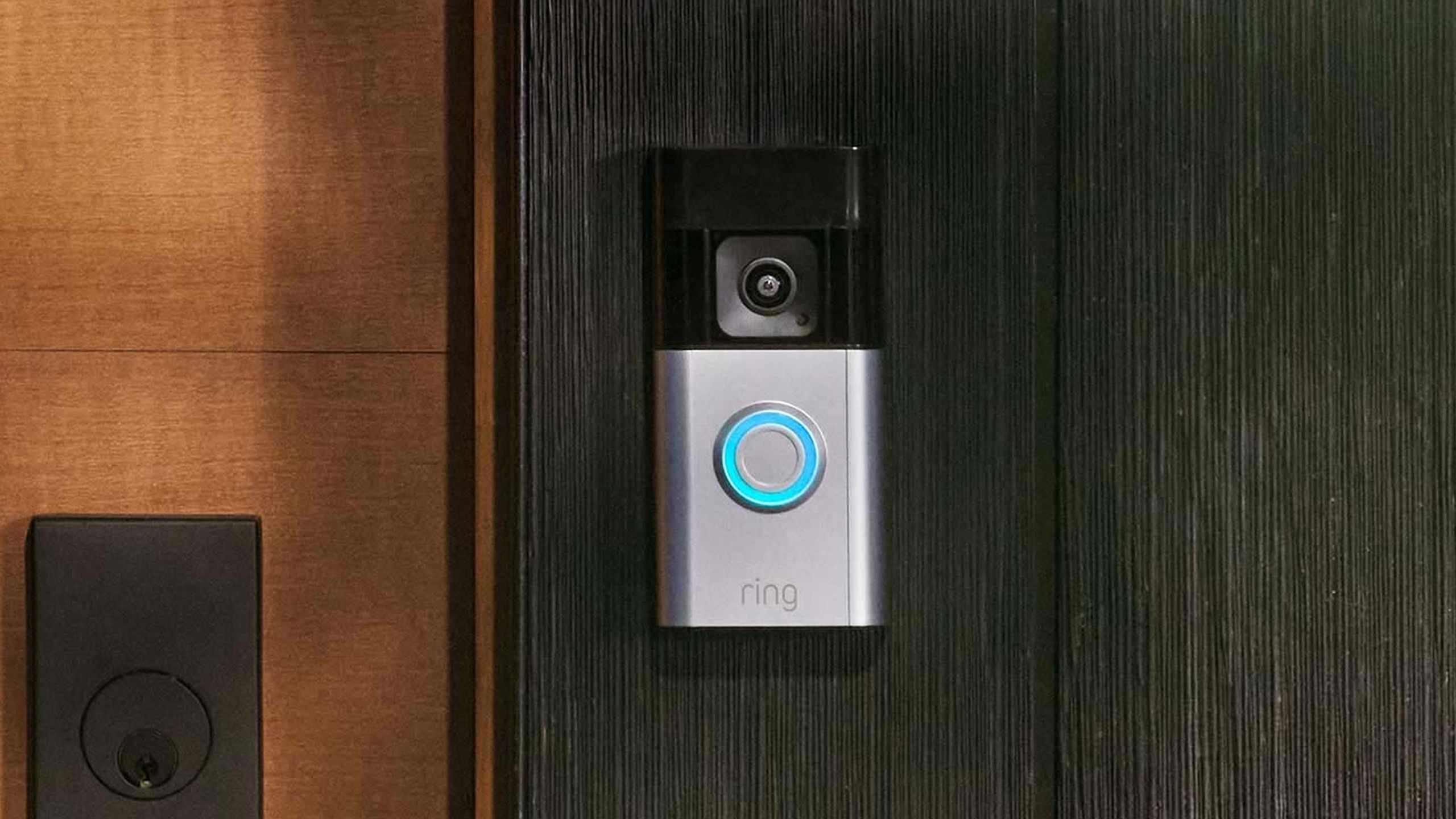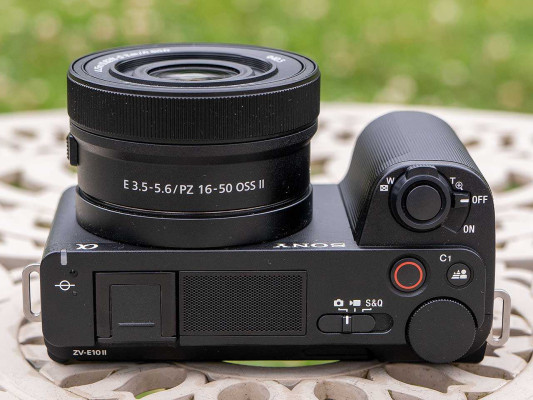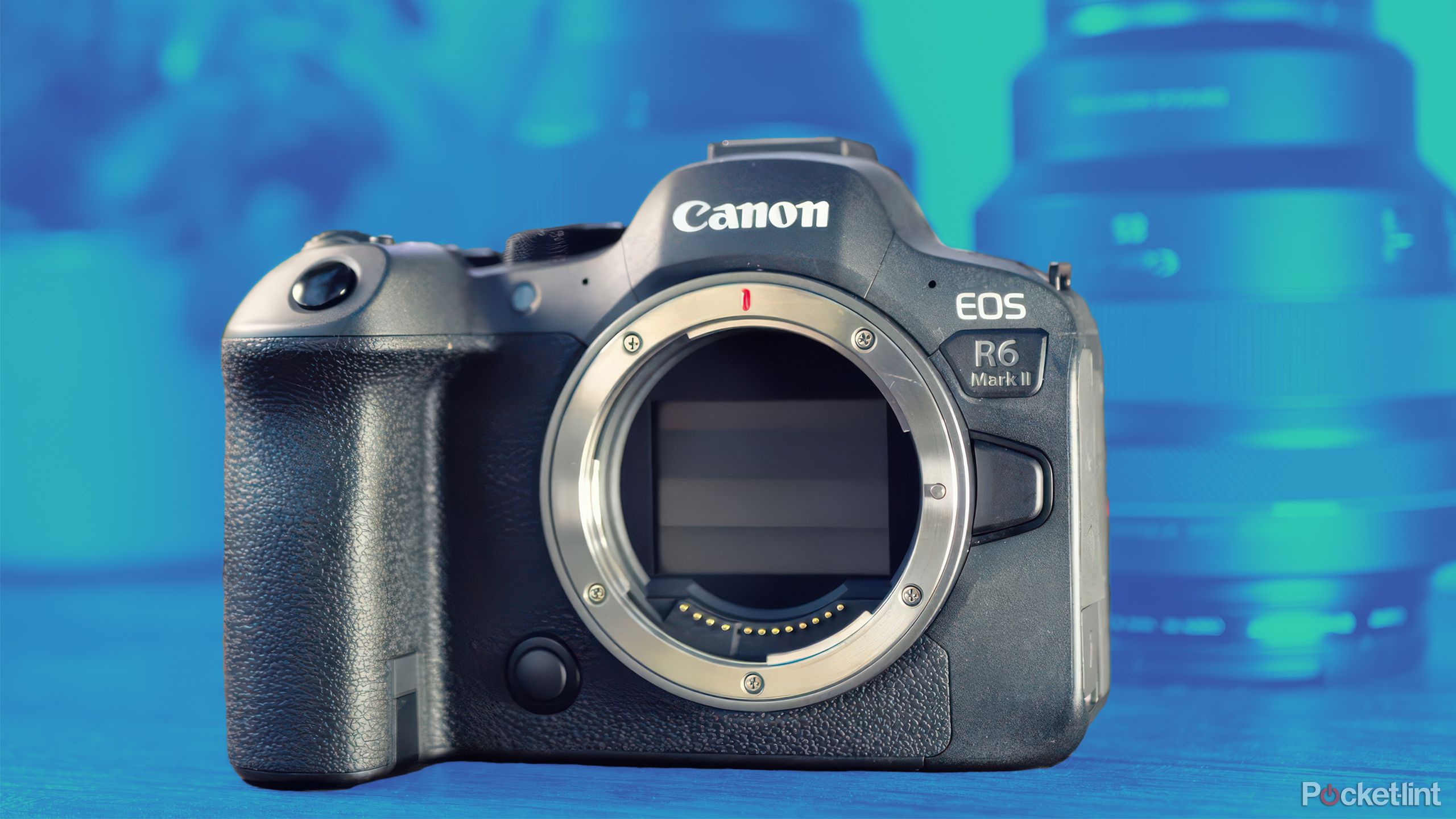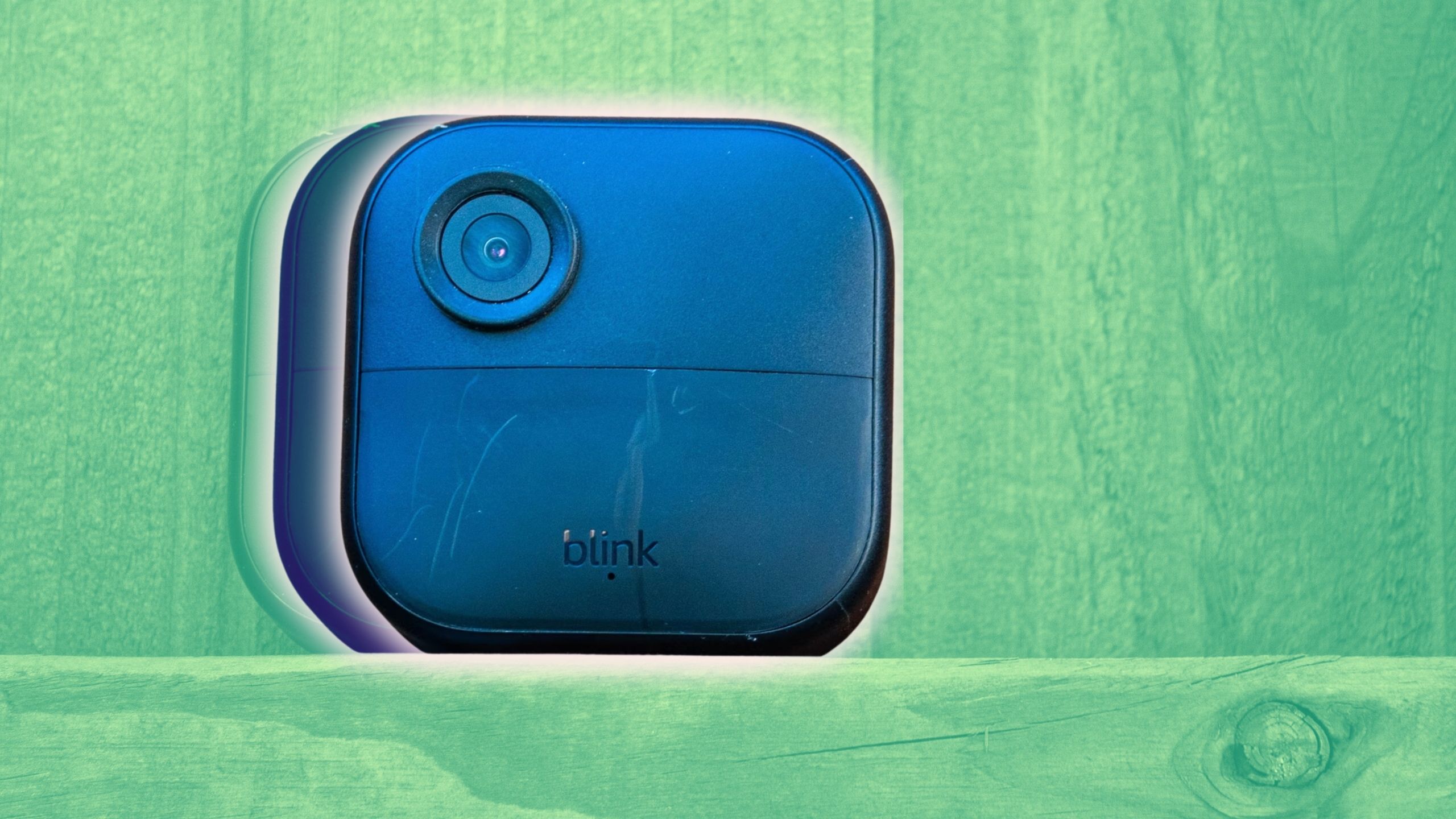Reviews

Canon EOS R1 preview
DPReview Latest |
The EOS R1 is Canon's flagship mirrorless camera and is the first EOS body to receive the coveted 1-series moniker since the EOS-1D X Mark III in 2020, which is in line with Canon's regular release cadence for the EOS-1 series for the past decade. As with most other 1-series models, its features and specifications are aimed at sports photographers and photojournalists who need the highest-performing, must rugged camera available.
According to Canon, the EOS R1 is as reliable and durable as the 1D X Mark III but includes more advanced features than the EOS R3.
Key specifications
- 24.2MP Stacked CMOS Dual Pixel sensor
- 100% AF coverage with cross-type sensors
- Up to 40fps blackout-free shooting (JPEG+Raw)
- Pre-capture for photo and video (1/2 sec. for photos, 3 or 5 sec for video)
- Eye-controlled AF with improved eye detection
- AI-trained Autofocus and post-shot processing modes
- 6K/60p internal Raw video capture
- DCI-4K capture up to 120fps
- Canon C-Log2 gamma profile
- Wi-Fi 6E and Ethernet connectivity
Canon says the EOS R1 will be available later in 2024 at a recommended price of $6300.
Index:
- What's new?
- How it compares
- Body and controls
- How it compares
- Initial impressions
- Specifications
- Canon press release
What's new:
 |
As you might expect on a Canon 1-series camera, the EOS R1 includes Canon's latest and fastest technology for capturing and processing images.
Sensor
The EOS R1 is built around an all-new 24.2MP Stacked CMOS sensor. It's a faster sensor than we've seen in previous Canon cameras and has a full sensor readout rate of 2.8ms (1/360) when shooting stills. That compares to just under 5ms on the EOS R3, making the R1's full sensor readout nearly twice as fast as the R3's.
In addition to the faster speed, the R1's sensor also includes 100% AF coverage with cross-type sensors. This is accomplished by rotating every other line of the sensor's dual-pixel PDAF pixels 90º to create PDAF zones sensitive to horizontal lines as well as vertical. Cross-type autofocus works in photo mode only and does not work under certain conditions, such as flickering light sources.
The new sensor delivers up to 40fps blackout-free continuous shooting in 14-bit mode.
New Digic accelerator
 |
The EOS R1 uses Canon's Digic X processor along with a new Digic Accelerator co-processor. Canon claims this co-processor is the key to the camera's improved autofocus features, particularly those using AI features derived from machine learning.
The result is that the camera can do more than identify a subject; in certain situations, it can identify a subject, such as a person, and determine what type of action that person is performing, such as a basketball player driving to the basket with the ball. This allows the camera to prioritize and maintain focus on the most important subject in a scene.
Autofocus
Canon claims the R1 has the most advanced autofocus system ever featured on an EOS body, anchored around several new features.
Eye-controlled AF
 |
The EOS R1 receives an updated version of the eye-controlled AF system found on the EOS R3. (Which is a modernized version of the system found on some of Canon's EOS film cameras from the 1990s and 2000s). With eye-controlled focus, the camera moves a focus target around the viewfinder by following your eye. Once this target is close to your intended subject, initiating autofocus will trigger the camera to lock onto the most likely subject and continue tracking it.
Eye-controlled autofocus has been a polarizing feature on previous EOS models because it hasn't worked well for all users, but Canon hopes to change that. On the R1 (and R5 II), the system has a wider field of view to better track your eye, which results in an expanded viewfinder area and larger eye cup. Additionally, new compact optics and a revised line-of-sight detection algorithm mean your eye can be approximately twice as far away from the EVF and still work. The updated system also includes eyeglass detection, which should improve performance for glasses wearers.
Action Priority AF mode
Another important new feature is Action Priority AF mode. This mode uses machine learning technology to analyze a scene and attempt to predict the most important subject(s) based on the context of the scene. For example, when shooting basketball, the AF system will generally attempt to stick with the player with the ball, even if that person crosses paths with similar-looking players. If the player passes the ball, the system will know to re-prioritize AF on the player who receives it.
Action Priority AF mode is currently trained on football (soccer), basketball and volleyball. A Canon representative hinted that additional sports might be added in the future.
Pre-registered person priority
 |
The EOS R1 allows users to pre-register particular people that the AF system will prioritize. Up to ten people can be registered on the camera, and adding someone is as simple as selecting a memory bank and taking their photo. Relative prioritization among registered subjects can be changed simply by changing their order in the menu.
Pre-registered person priority could prove useful in situations where there are many identifiable subjects in a frame but only a limited number of subjects you want the camera to focus on, such as a specific athlete in an arena or a bride and groom at a wedding reception.
Pre-continuous shooting mode
The R1's pre-continuous shooting mode can capture still images or video before the shutter button is fully depressed. In continuous shooting mode, the camera can pre-capture a half second of buffered images (up to 20 photos at maximum shooting speed). This can be done in JPEG, HEIF or Raw. In movie mode, it can pre-capture either three or five seconds of video.
AI-trained in-camera image processing
The EOS R1 adds two new in-camera processing features that replicate deep learning functions typically found in software like Adobe Camera Raw: neural network noise reduction and image upscaling.
 |
 |
| Out-of-camera JPEG image (ISO 102,400) | Image reprocessed in-camera using neural network noise reduction (ISO 102,400) |
Neural network noise reduction is designed to improve image quality without sacrificing detail. This feature requires a Raw image to use and is applied in the in-camera Raw conversion menu in playback mode. It can be applied to multiple images that you select but has to be applied selectively after capture.
In-camera upscaling increases the size of the image 2x in each orientation, resulting in a 96MP image when applied to photos from the R1. Canon hasn't revealed much about its methodology but says this upscaling does not use generative AI. Interestingly, upscaling can only be performed on a JPEG or HEIF image.
 |
 |
| Out-of-camera JPEG image (24MP) | Image re-processed using in-camera upscaling (96MP) |
You can apply noise reduction or upscaling to a single image, but not both. Images each take a few seconds to process, which explains why the feature isn't available in real-time while shooting. However, it's possible to batch process images for efficiency.
Blur/out-of-focus image detection
A new Blur/out-of-focus image detection feature promises to make culling images after a shoot more efficient. When activated, the R1 analyzes each photo it captures and tries to identify the ones in which the primary subject is in focus. The camera then adds a metadata tag to each image that can be read downstream by Canon's DPP software or used as a selection criteria in the playback menu. Canon says the feature could be implemented in any third-party application updated to support this tag.
To use Blur/out-of-focus image detection, the feature must be enabled before you shoot; it cannot be applied to already-captured images.
Video
 |
As you'd expect of a modern pro-grade camera, particularly one with a Stacked CMOS sensor, the EOS R1 boasts some impressive video specifications.
Its 24MP sensor means it can't shoot 8K video, but instead, it will capture 6K Raw footage at up to 60p in the 1.89:1 aspect ratio. Alternatively, it can shoot DCI or UHD 4K derived from this 6K capture at up to 60p. There are also subsampled DCI and UHD 4K modes that allow capture at up to 120p.
Canon says it wants the EOS R1 to easily fit into existing workflows that use its Cinema EOS cameras, and with this in mind, it has done a lot to make its footage readily comparable.
To start, it gains Canon's wider dynamic range C-Log2 curve, with the less ambitious C-Log3 option still available if you're not shooting in very high DR situations. It also adopts the XF-HEVC S and XF-AVC S file formats used in Canon's pro video cameras.
But beyond the boost in video modes is a significant increase in the support tools accompanying them. The R1 gains waveform and false color displays to provide industry-standard ways to visualize exposure. These come in addition to the zebras already offered. There's also a tally lamp on the front of the camera, helping to indicate to anyone in front that it's recording.
It also has the ability to handle digital audio inputs via the connectors in its multi-function hotshoe and lets you individually control the levels for four-channel input.
Dual Shooting mode
The EOS R1 also offers a Dual Shooting mode that captures JPEGs on one card while video is being recorded on the other. In this mode, the R1 will capture FullHD video at up to 30p while capturing JPEGs in bursts.
JPEGs are 17MP 16:9 images (5616×3168) and can be captured at up to 10fps while you're shooting 1080 video. However, the differing shutter speed requirements for stills and video capture still require you to prioritize one over the other.
Temperature control
Significant efforts have been made to help the camera stay cool while shooting, and Canon says that, if it hasn't been used, the EOS R1 can shoot for over two hours at 23°C (73°F) when capturing 6K/60 Raw with proxy recording also engaged. The 4K/60 derived from this footage is a little more demanding, seeing the recording time drop to 109 minutes, though it increases to over two hours again if you use the sub-sampled 4K/60 mode. The company says there is no time limit for capturing sub-sampled 4K/30.
How it compares
The EOS R1 ushers in the mirrorless generation of EOS-1 series cameras, a product line historically focused on delivering the highest performance available in a Canon body. The R1 takes over this spot in the lineup from the EOS-1D X Mark III, a DSLR we consider its direct predecessor. (Of course, there's also the EOS R3, which Canon maintained was not a replacement for the 1D X III, despite having a similar body style, price and specs.)
Unlike some manufacturers, Canon has not combined its highest-performing camera with a higher-resolution sensor. As such, we'll compare it to other bodies aimed at the high-performance, 24-ish megapixel market: its predecessor, the EOS-1D X III, the EOS R3, and the Sony a9 III.
| Canon EOS R1 | Canon EOS R3 | Sony a9 III | Canon EOS-1D X III | |
|---|---|---|---|---|
| MSRP at launch | $6300 | $6000 | $6000 | $6500 |
| Sensor type | Stacked CMOS Dual Pixel (cross-type) | Stacked CMOS Dual Pixel | Stacked CMOS | FSI CMOS Dual Pixel |
| Pixel count | 24MP | 24MP | 24MP | 20MP |
| Max burst rate | E-shutter: 40fps Mech shutter: 16fps |
E-shutter: 30fps Mech shutter: 16fps |
E-shutter: 120fps | Live view: 20fps Viewfinder: 16fps |
| Rolling shutter rate | 2.78ms | 4.84ms | 0ms | <4ms with mech shutter |
| Image stabilization | Up to 8.0EV | Up to 8.0EV | Up to 8.0EV | Lens only |
| Video options |
6K/60 Raw |
6K/60 Raw 4K/60 from 6K |
4K/120 from 6K | 5.5K/60 Raw 4K/60 |
| Viewfinder | 9.44M dots 0.9x |
5.76M dots 0.76x |
9.44M dots 0.9x |
Optical 0.76x |
| Rear screen | 3.2" 2.1M dots Fully articulated |
3.2" 4.2M dots Fully articulated |
3.2" 2.1M dots Articulate & tilt |
3.2" 2.1M dots fixed |
| Battery life, viewfinder / LCD | 700 / 1330 | 440 / 760 | 400 / 530 | 2850 / 610 |
| Dimensions | 158 x 150 x87mm | 150 x 143 x 87mm | 136 x 97 x 83mm | 158 x 168 x 83mm |
| Weight | 1115g | 1015g | 703g | 1440g |
The R1 outpaces the 1D X III in almost every way, with one notable exception: battery life. Without the need to drive a high-resolution EVF, battery life is still a potential advantage for DSLRs (though it's one the CIPA rating system can exaggerate a bit). Also, while it's not necessarily a pro or con, users who still prefer the experience of using an optical viewfinder (and we know you're out there) will probably find more joy in the 1D X III.
Assuming you're OK with an EVF, the R1 will also give you a slight advantage in size and a noticeable advantage in weight over the 1D X III. On the other hand, if you like the general design of the R1 but prefer a slightly smaller, lighter body, the EOS R3 is no slouch and delivers all but the very newest features found in the R1.
The a9 III plays the role of disruptor in this group. First, its compact, full-frame body will likely appeal to a different set of users than the Canons. Again, that's not unequivocally a pro or con but a preference. Second, its global shutter sensor sets it apart from all other mirrorless cameras today and could be a deciding factor depending on your needs and shooting style. However, it's worth noting that the a9 III's higher base ISO means it gives up a little image quality potential for this.
Body and controls
 |
The EOS R1 undeniably has the heft and feel of an EOS-1 series camera, with a build that suggests you could use it to pound nails into a board if your hammer went missing. It comes in somewhere between the size and weight of the EOS R3 and the EOS-1D X Mark III it replaces. The most noticeable differences between the R1 and the 1D X Mark III are the camera's height, with the R1 a noticeable 18mm shorter, and weight, where the R1 comes in over 300g (10.6oz) lighter than its mirrored predecessor.
| Weight | Width | Height | Depth | |
|---|---|---|---|---|
| Canon EOS R1 | 1115g | 158mm | 150mm | 87mm |
| Canon EOS R3 | 1015g | 150mm | 143mm | 87mm |
| Canon EOS-1D X III | 1440g | 158mm | 168mm | 83mm |
The R3, by comparison, feels noticeably smaller in the hand than the R1. Not only is it shorter, but its body is almost a full centimeter narrower in width than the 1-series cameras. If you've been shooting with an R3, know that the R1 will feel somewhat larger by comparison.
Fun fact: the R1 includes a little mystery window in the lower left corner on the back of the camera. A Canon representative told us it's reserved for a future feature but doesn't do anything at the moment. Feel free to speculate in the comments.
Customizable smart controller
 |
Canon's smart controller, a two-function controller that originally appeared on the 1D X III and again on the R3, doubles as the AF-On button and simultaneously acts as a trackpad for your thumb. It can be used to move the AF point around the viewfinder while pressing it initiates autofocus.
On the EOS R1, the smart controller becomes a three-function controller, gaining the ability to distinguish between its half-pressed and fully-pressed positions, similar to the shutter button. This facilitates a degree of customization. For example, you could set it to engage autofocus at the half-pressed position, with the fully-pressed position switching the camera to its fastest continuous shooting speed. This would allow you to use a more conservative burst rate but instantly accelerate the camera to its maximum burst rate at the critical moment of action.
However, the smart controller isn't fully customizable. You can customize either the half-pressed or the fully-pressed position, but not both. You can also leave one of the positions disabled, meaning the controller will function similarly to the 1D X III or R3.
EVF
 |
The R1's viewfinder is visibly larger than those on previous EOS mirrorless cameras due to the updated eye-controlled AF system. The EVF uses a 9.44M-dot OLED viewfinder, which Canon claims is approximately three times the brightness of the R3's EVF when used in OVF mode (a setting intended to simulate using an optical viewfinder). It has a magnification of 0.9x, the highest in the EOS series, and 40% larger than the one in the 1D X III.
Notably, the EVF's display does not drop to a lower resolution when shooting, though Canon confirmed that, while it offers the higher DR 'Optical viewfinder simulation mode,' it does not support HDR display of images.
Above the EVF is Canon's multi-function hotshoe, which can provide communication and power for accessories like a microphone adapter.
Updated menus
 |
Canon has added a new color-coded tab to its menu system. Described as "olive green," the new section centralizes the camera's control customizations into a single menu for easier access, including customizations for both shooting and playback modes.
Storage and connectivity
 |
The EOS R1 has dual CFexpress type B card slots supporting capacities up to 2TB. Instead of being accessed through a door on the back of the camera like the 1D X III, cards now load through a door on the right side of the body, similar to the R3. The camera includes a 2.5 GBASE-T Ethernet port and 802.11ax Wi-Fi support for direct connectivity. This is the new WiFi 6E standard that promises faster connections, in part by using the parts of the 6GHz spectrum, in addition to the 2.4GHz and 5GHz regions currently in use.
Other connections include a USB-C port (USB 3.2 Gen 2, 10Gbps), a full-sized HDMI port, 3.5mm microphone and headphone jacks and a PC Sync terminal.
Battery
 |
The Canon EOS R1 uses the same LP-E19 battery as the EOS R3 and EOS-1D X Mark III but, unlike those cameras, isn't compatible with the earlier LP-E4N or LP-E4 batteries. On the R1, this battery delivers a CIPA-rated 700 shots per charge, up from 440 shots on the R3, an increase of nearly 60%.
Due to the CIPA testing methodology, these ratings typically underestimate real-world performance for most users, particularly when using continuous shooting (as one might expect on a sports-focused camera). However, they generally provide a good basis for relative comparisons between models.
Canon supplies a battery charger with the camera. The camera can also be charged over USB using Canon's PD-E1 or PD-E2 power adapter or a similarly powerful USB PD power pack.
Initial impressions
By Dale Baskin
It's hard to believe that Canon's EOS-1 series of cameras is 35 years old. Consider that the original EOS-1 was introduced in September of 1989, two months before the fall of the Berlin Wall. It was the same year that Tim Burton's original Batman hit the big screens, New Kids on the Block was all over the pop charts, and Miami Vice was wrapping up its final season.
Just as the EOS-1 series made the leap from film to digital, It was inevitable that the series would eventually make the jump to mirrorless. With the EOS R1, Canon officially has its flagship mirrorless camera.
The waters are muddied a bit by Canon's "definitely-not-our-flagship" EOS R3 launched in 2021, which has effectively served as a mirrorless proxy for the 1-series until now. Not only does the R3 resemble a 1-series camera, but it launched with similar top-level specs and slid squarely into the 1-series' historical price bracket.
Ultimately, every company is entitled to designate a flagship product as it sees fit, and Canon has been clear that the EOS R1 is it. However, given the three-year gap since the R3 was introduced, it's understandable that some will be underwhelmed with what seem like relatively minor upgrades, such as jumping from 30 to 40fps in a market where competitors can shoot 120fps.
 |
|
Canon EOS R1| F2.8 | 1/1250 sec | ISO 4000 |
The critical thing about EOS-1 series cameras is that they're designed almost exclusively for people who are already using EOS-1 series cameras. Canon has indicated in the past that the EOS R3 was aimed at pros and very dedicated enthusiasts, whereas the 1-series is aimed entirely at pros who expect zero compromises.
In this respect, there are some differences between the R1 and R3. While the R3 is a fully weather-sealed, rugged camera, Canon was clear that it wasn't designed to withstand the same level of punishment or challenging conditions as the 1D X III. The R1 has no such asterisks next to it, and if your income depends on the reliability of your gear, that's not a trivial difference. Similarly, the 1D X III has a virtually unlimited buffer when shooting, whereas the R3 – while still impressive – is a bit more limited. We haven't tested the R1 yet, but it wouldn't surprise me to find out it performs similarly to the 1D X III in this respect.
I suspect the R3 was a good test bed for technology like eye-controlled autofocus without fully committing the EOS-1 brand to the feature. If the result is that the R1 arrives with a superior version that works more reliably for pros when they try it, I can see the logic.
 |
| Canon EOS R1|F2.8 | 1/500 sec | ISO 1600 |
Speaking of eye-controlled AF, I'm happy to see Canon continuing to invest in the feature, which really has the potential to be a differentiator in terms of usability. I've written about some of my own experiences using it, and it can be a game changer – if it works for you. Canon knows that inconsistency in user experience is the most significant barrier to broader acceptance, and the fact that it has attached the feature to a 1-series model makes me hopeful that the newest iteration works more universally.
In my limited time with the EOS R1 so far, I can safely say that the shooting experience feels more similar to using the R3 than the 1D X III, mainly because the R3 is also a mirrorless camera with eye-controlled autofocus. However, the EOS 1D X III DNA is unquestionably there, and the camera has a heft and battle-hardened feel you don't get from the R3. I'm really looking forward to pushing it to the limits along the sidelines to see how it performs.
And if I'm being completely candid, I'm particularly hoping the new sports-trained Action Priority AF mode delivers on its promise. If it does, it will make me look like a much better sports photographer than I really am.

